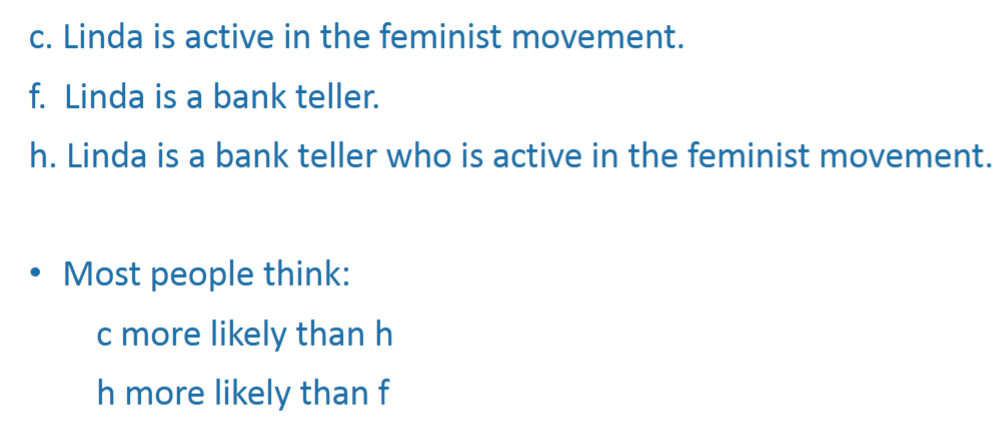Week 4 Videos
1/37
There's no tags or description
Looks like no tags are added yet.
Name | Mastery | Learn | Test | Matching | Spaced |
|---|
No study sessions yet.
38 Terms
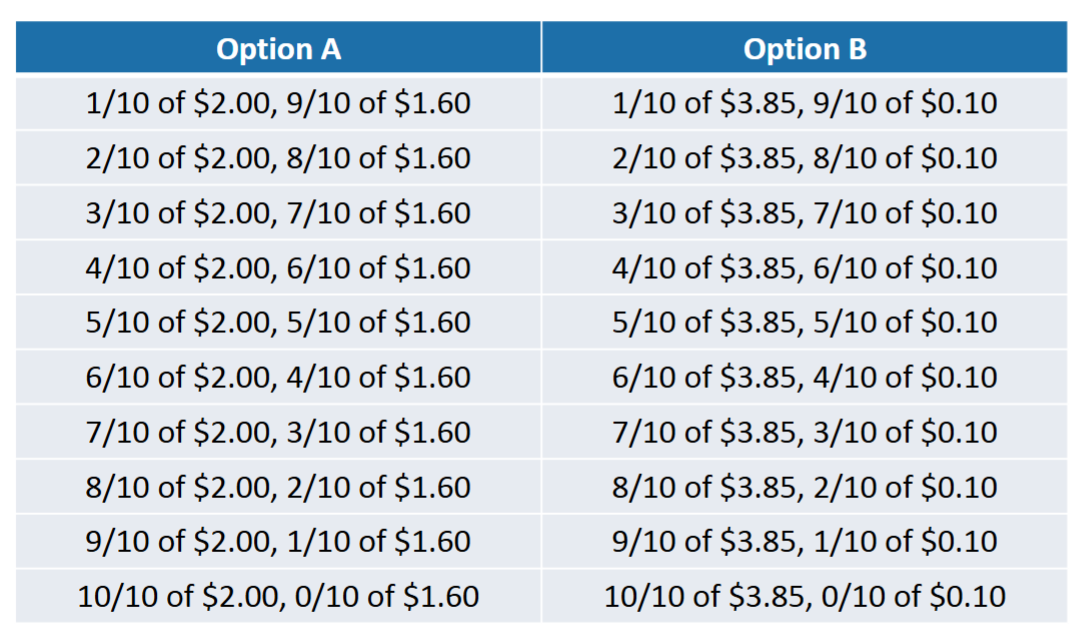
What is this called? Give two names.
Choice list / multiple price list
We could let two groups fill out the table and check which group is more risk averse. However, if we want quantitative predictions, we need more, namely …
But we do not know a full utility function yet. If we assume a parametric form of the utility function (like CRRA), then we can estimate the parameter r and with that u(x).
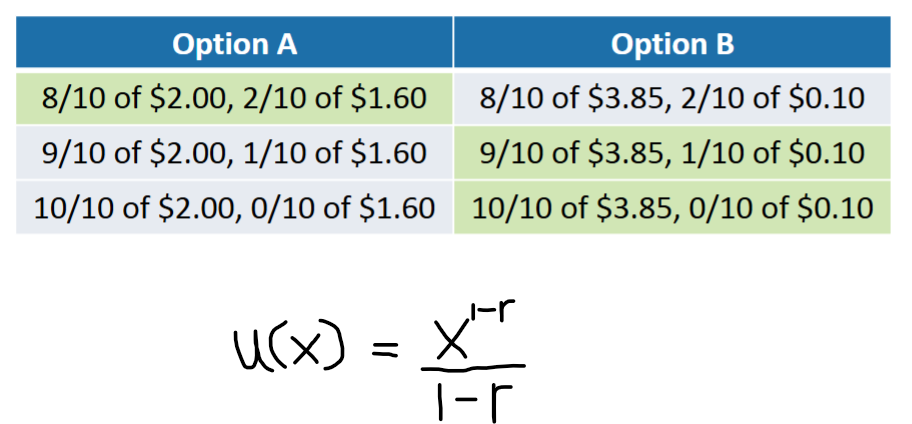
Assume we know Mandy’s choices and we know that she satisfies Constant Relative Risk Aversion with the equation given in the image. What is her value for r?
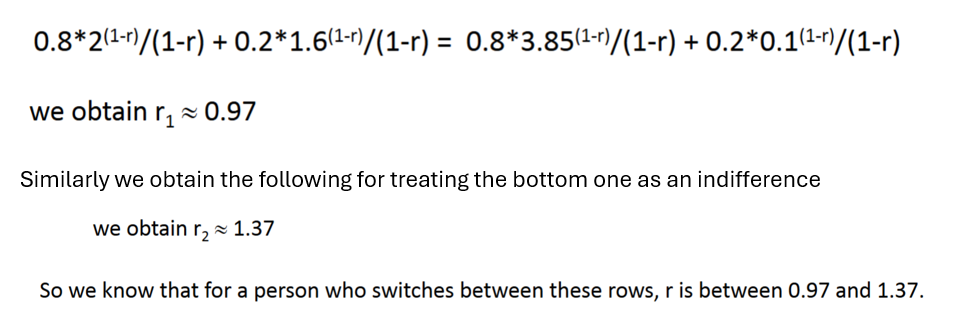
What is the advantage of calculating a parameter?
More predictions and calculations possible after observing the parameter.
What is the disadvantage of calculating a parameter?
we need an extra assumption – expected utility in this case, which we know is not accurate.
If we compare two groups to see whether one switches higher or lower, are we assuming EU?
No, we do not need to estimate a parameter and also do not need an extra assumption.
Can we use choice lists under the Prospect Theory framework? Why/why not?
Yes! Then assume a particular
parametric form of the probability weighting function as well. Then we would have at least 2 parameters: one for utility and one for probability weighting.To estimate both parameters we would need (at least) two different choice lists, so that we have
(at least) two equations in two unknowns.
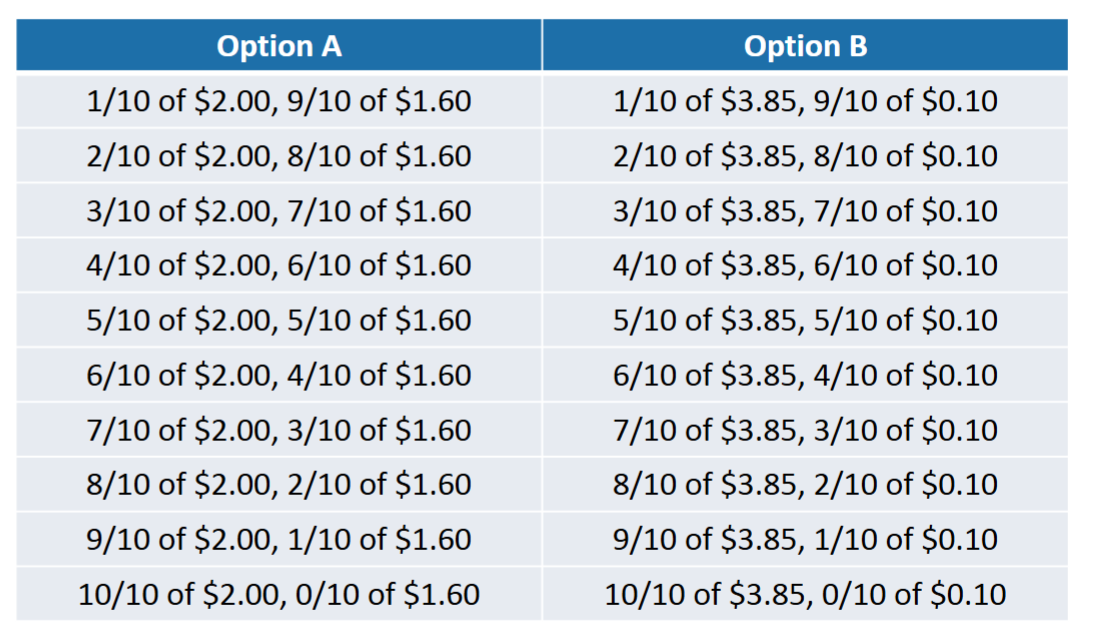
Jonathan is doing his MSc thesis. He has distributed this exact choice list to all his 100 respondents. What could he have done better?
Give 50 this choice list and 50 people a choice list where the right and the left column are swapped.
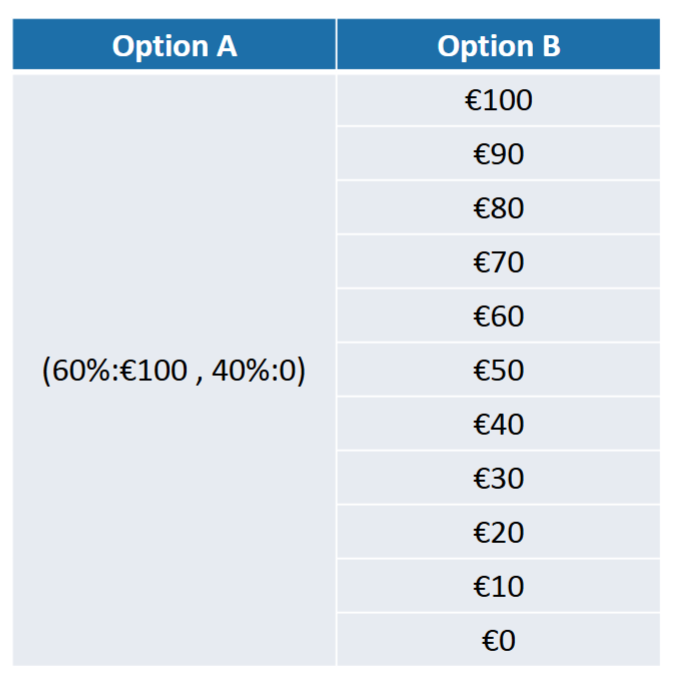
Consider a person who chooses B
in the first 6 rows. What is his certainty equivalent?
between 40 and 50 so our estimate would be 45
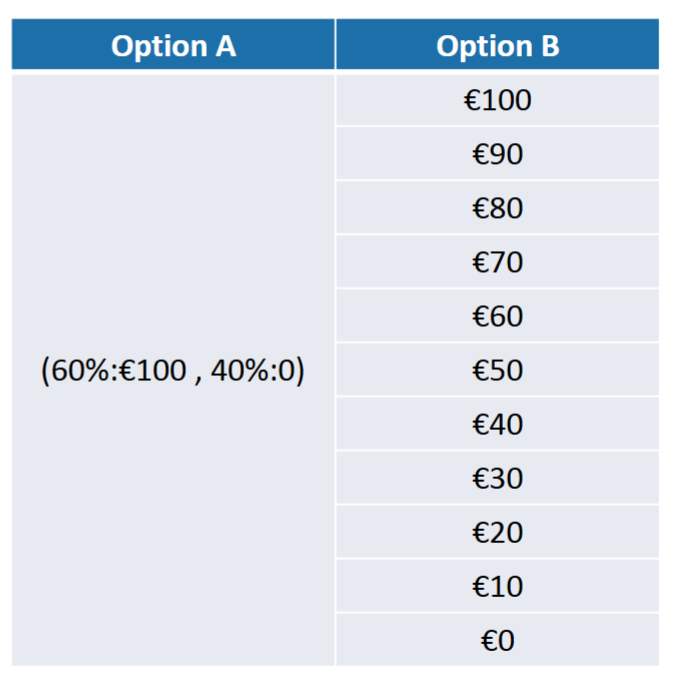
Consider a person who chooses B
in the first 6 rows. What is his r if he satisfies CRRA?
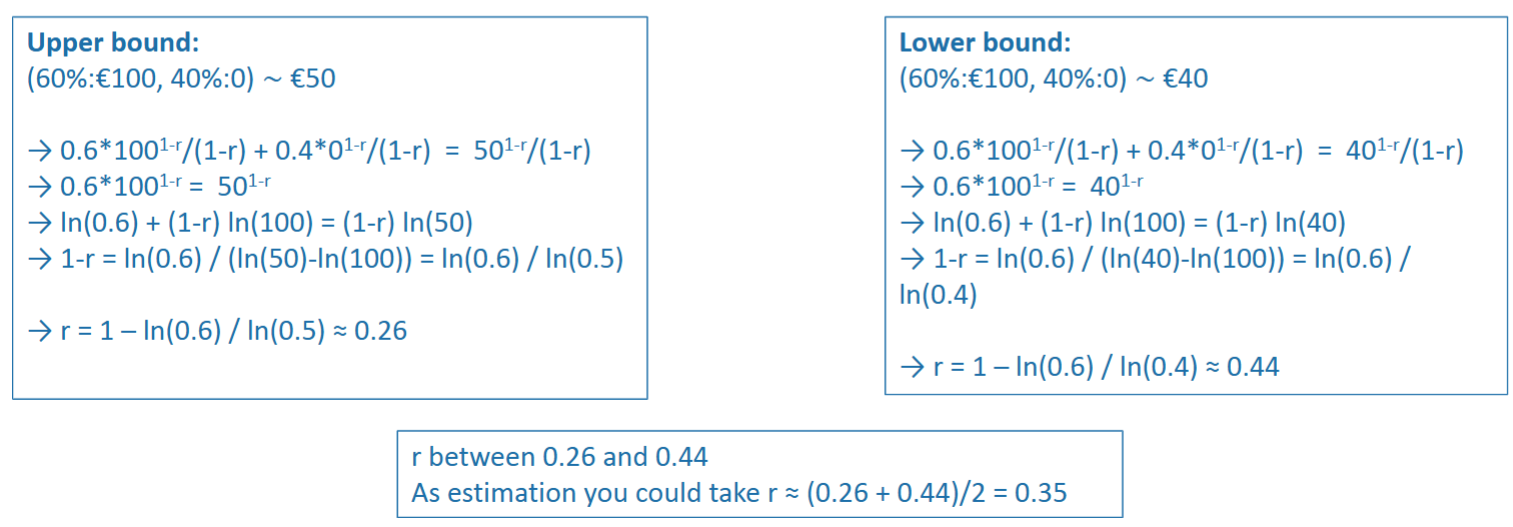
Name six points to consider when designing a choice list.
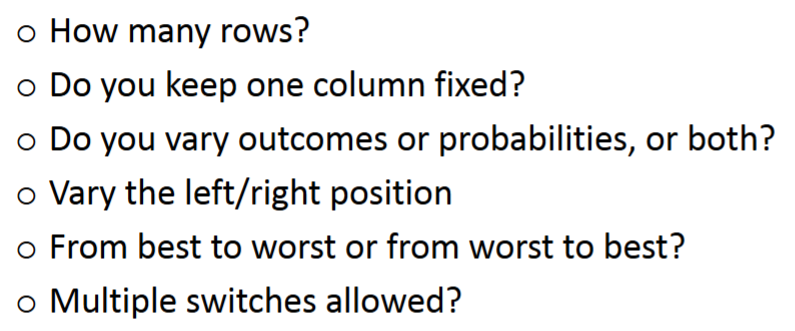
Choice lists cannot only be used for probabilities, but also for …
time & social preferences
MPLs are one approach to elicit indifference points. Name two other ways.
and the bisection method (not covered in this course)
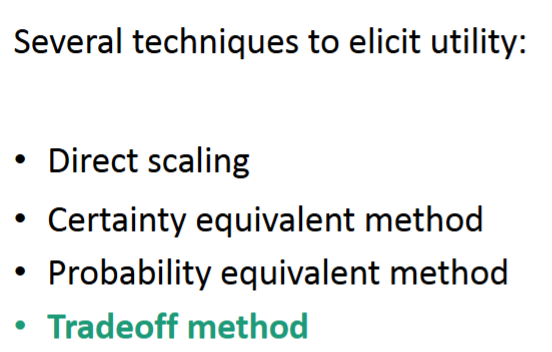

What is this utility elicitation method called?
Direct scaling
Give an example of direct scaling.

What is the advantage of direct scaling?
Easy method
What is the disadvantage of direct scaling?
No theoretical justification, not based on revealed preference.
What is so special about the Tradeoff Method?
Method to elicit utility independently of probability weighting
What exact choices do you give the respondents when using the Tradeoff Method? Give the first three.
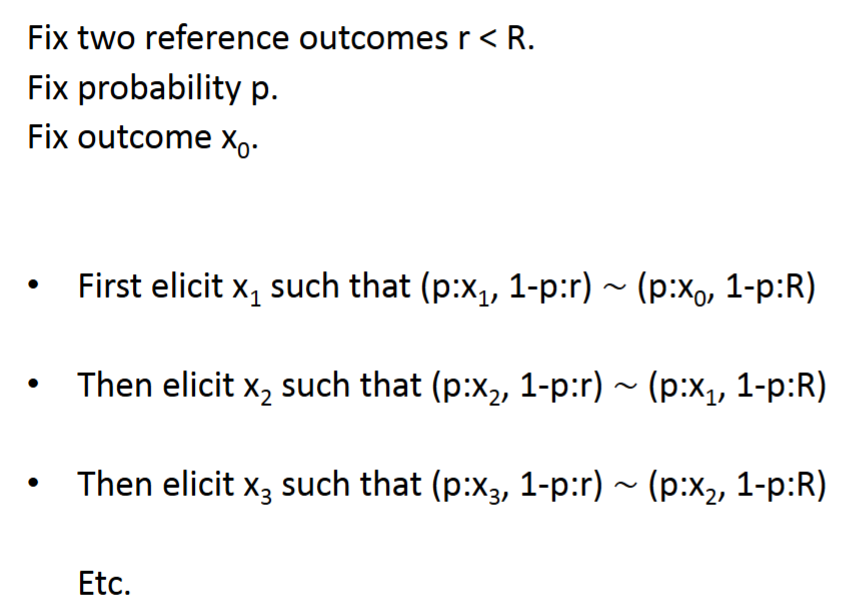
How does the Tradeoff Method help us to draw the utility function?

Does the Tradeoff Method work under rank-dependent utility and prospect theory?

Does the Tradeoff Method also work under uncertainty?


A

D
If we want to do experiments with real incentives, which method should we perhaps not use to elicit utilities? Why not?
TO Method
What are 3 disadvantages of the TO Method?

In what kind of application is the TO method a good method to obtain the utility function?
Prescriptive application → Suppose you believe that people should make decisions according to EU, but you know that they
often behave according to PT
How do people form beliefs about the likelihood of uncertain events?
They are not fully rational, but use heuristics to make quick decisions.
Heuristics often give a rather good guess, but may lead to systematic biases.
What heuristic do people use to answer this question: “What is the probability that A belongs to B?”
Representativeness heuristic
How representative is A of B, how similar is A to B?
To which six biases does the representativeness heuristic lead?
Insensitivity to prior probability of outcomes
Insensitivity to sample size
Misconceptions of chance
Insensitivity to predictability
Illusion of validity
Misconception of regression
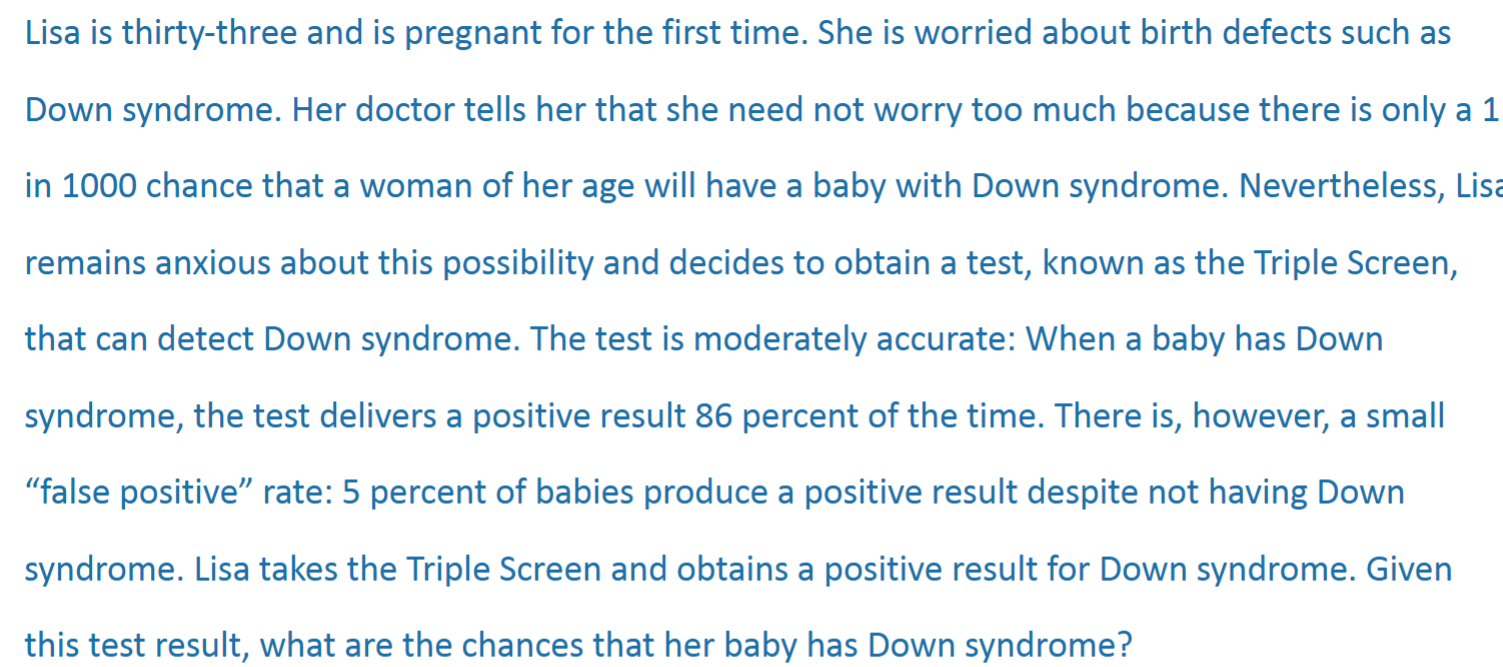
Of which bias is this an example?
Insensitivity to prior probability of outcomes (→ People have the tendency to neglect the base rate as soon as specific information is
available.)
‘Entrepreneurs tend to think that the base rate for business failure is not relevant
to their situation.’
Of which bias is this an example?
Insensitivity to prior probability of outcomes (→ People have the tendency to neglect the base rate as soon as specific information is
available.)
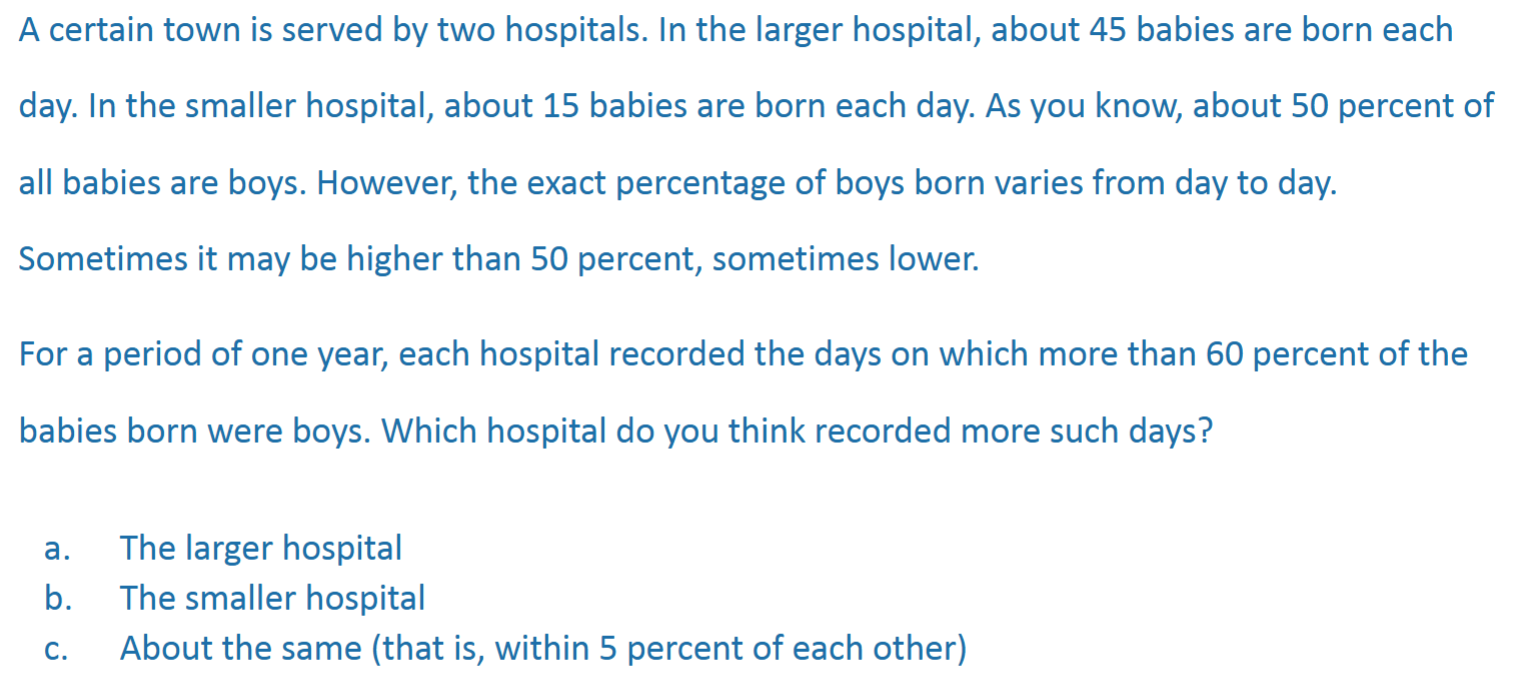
John fills in answer C. To which bias is he falling subject?
Insensitivity to sample size
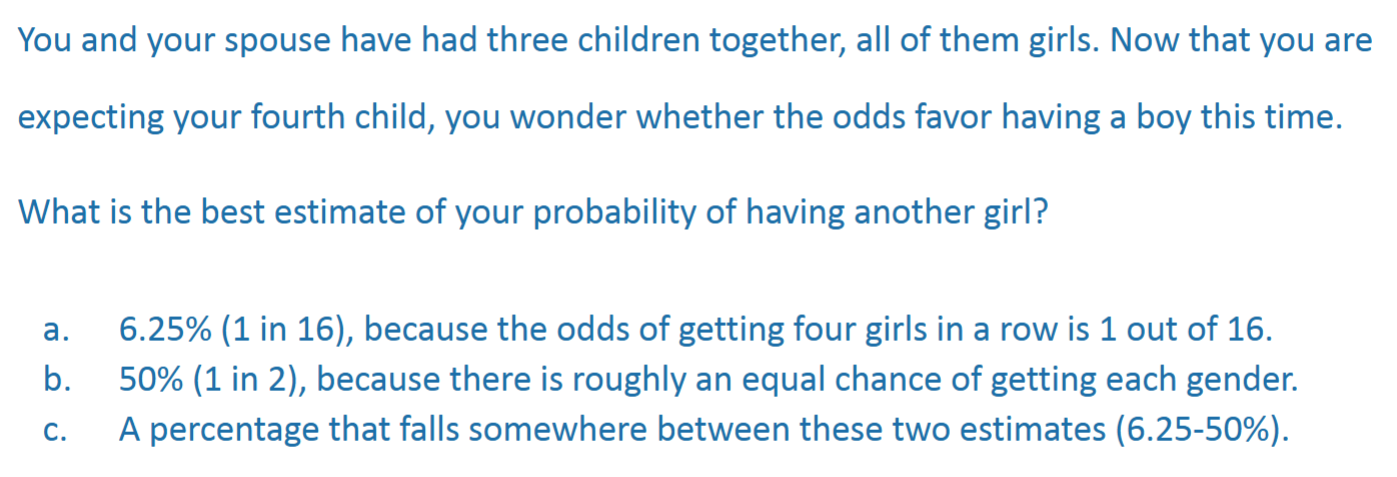
Ann fills in answer A. To which bias is she falling subject?
Misconceptions of chance

Of which bias is this an example?
Misconceptions of chance
Suppose a large group of children did a test. We select the 10 best scorers and send them to the Mathematics Olympics in Beijing to do an equivalent second test.
The rest of the children do the same test but then in the class room. We will find the results of the people in Beijing somewhat disappointing compared to the other children.
Sending the 10 best scorers to Beijing is an example of a certain bias. Which bias?
Misconception of regression to the mean (→ even purely by chance, good performance will be followed by worse, and poor performance by better)
The boss of Unilver conducts a study on how to motivate employees. They are given a reward after good performance and they are punished after poor performance. He is very surprised to find out that the people who have been given a reward perform worse the next time, whereas the punishing seems to improve performance substantially.
Should he only punish people from now on and not give rewards? Why/why not? Base your answer on economic arguments.
No, we have misconception of regression to the mean. Even purely by chance, good performance will be followed by worse, and poor performance by better.
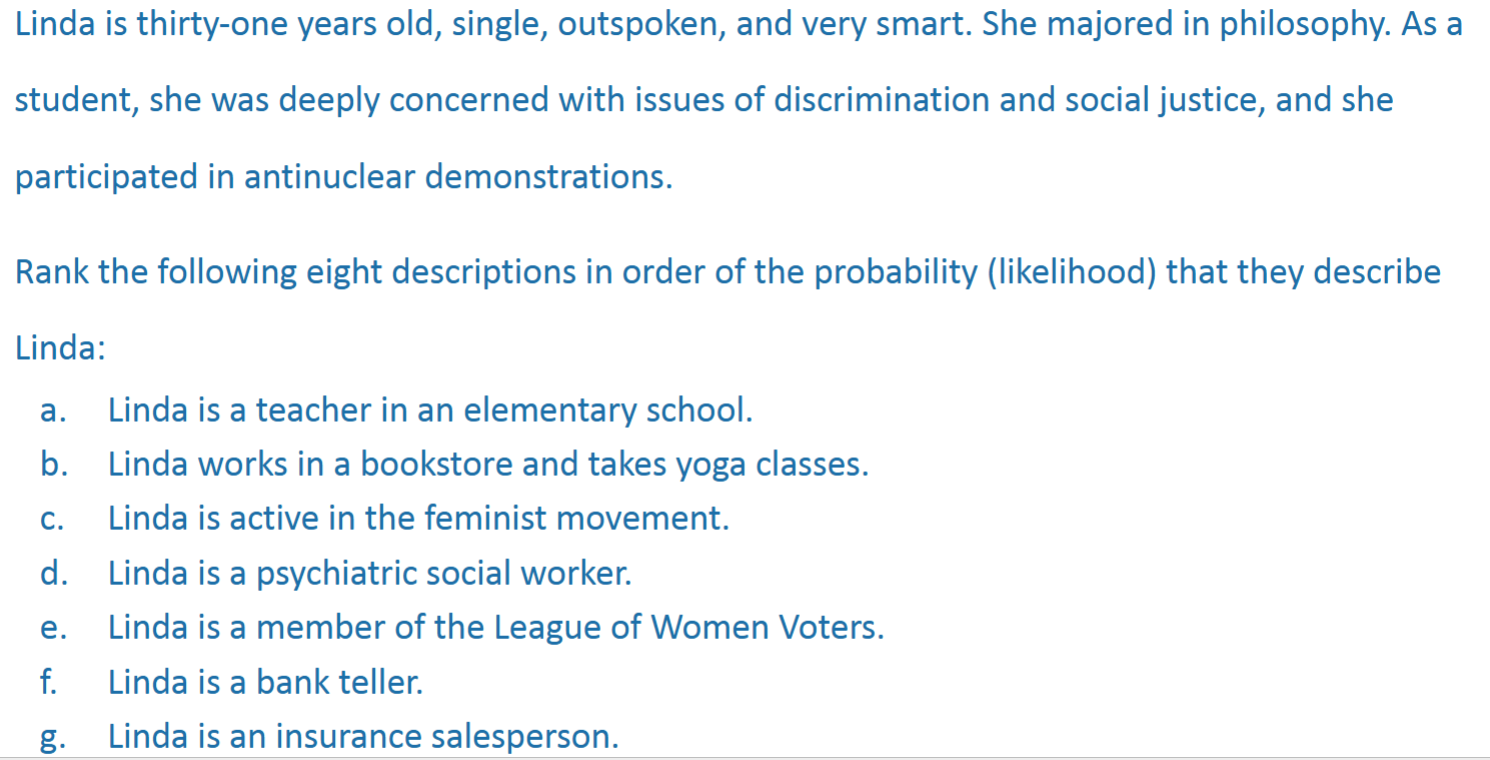
What bias is this related to?
Conjunction fallacy
